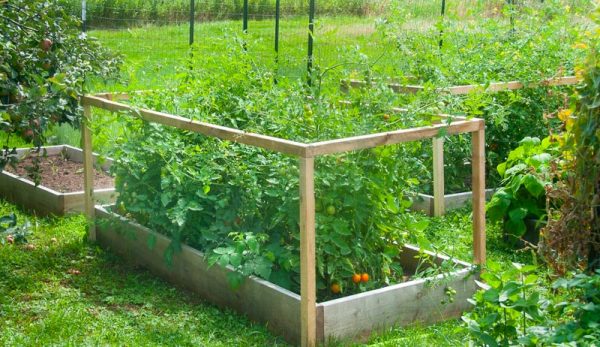
We all know about encouraging garden plants to climb trellises for support. Whether peas, roses or grapes, trellises provide the support climbing plants need to thrive.
Some trellises are ornate, crafted of wood or metal and designed to add a pleasing aesthetic to the garden. Others are more utilitarian in nature, constructed from a few T-posts with twine tied between them. The one rule is that trellises are normally installed before the plants take root, so the support is there as the plants grow … but truth be told, this is a rule that can (and should) be readily broken under certain circumstances.
The truth is, trellises aren’t only useful for supporting climbing plants. They can play just as important a role in supporting tall, gangly plants struggling to stand under challenging circumstances.
And for this purpose, trellises can be installed virtually anytime and anywhere, saving the day when something goes awry.
Read more: Check out these 5 upcycled trellis ideas you can use in your garden.
Some Examples of Garden Trellises in Action
Let me give you an example. You might have a bed of sunflowers, boldly reaching for the sky, but planted in a location that receives a fair amount of wind. Without protection, these tall flowers might be blown and buffeted until they break.
Add a trellis to the mix, and the sunflowers have something to lean on for support.
Here’s another possibility. You’ve planted a bed full of squash, with their big, broad leaves spreading upward and outward to catch the sunlight. But there’s a strong thunderstorm in the forecast, and you’re concerned the heavy wind and rain will beat down the leaves and break their stalks.
A homemade trellis of sorts that weaves twine under and among the leaves might just provide enough support to protect the plants from damage.
Garden Trellises Don’t Have to Be Complicated
Trellises like these don’t have to be complicated. Do you have a raised bed of tomatoes where the plants are outgrowing their cages and threatening to fall over from the weight of their branches and fruit? Install a wooden post at each corner of the bed, to a height just shorter than the tomato plants.
Then run horizontal boards between the posts to give the tomato plants “guard rails” to lean on.
Other techniques and materials are just as effective. Twine can be a gardener’s best friend, being both effective in supporting plants and practically invisible when viewed from a distance. T-posts and other metal stakes can be readily installed and removed as needed.
No matter the details, all shapes and sizes of trellises can be constructed by anyone with the materials and a little bit of DIY ingenuity.
Read more: Is there any more versatile piece of farm equipment than the humble metal T-post?
Using Garden Trellises to Deal with Environmental Challenges
I’m speaking from experience. My garden has met with several weather-related challenges this year. These include inconsistent rainfall (too little, followed by too much) and lots of wind.
Supporting plants under these tricky circumstances has required lots of effort (and creativity) on the trellis front. I’ve even had to prop up apple tree branches with homemade wooden stakes crafted from maple saplings.
Since the trees are producing fruit beyond their means and I’m worried about branches breaking on stormy days.
But hey—there are worse things to do than spend time in your garden building trellises and getting to know the nuances of every plant, right? That sounds like a fun afternoon to me!




